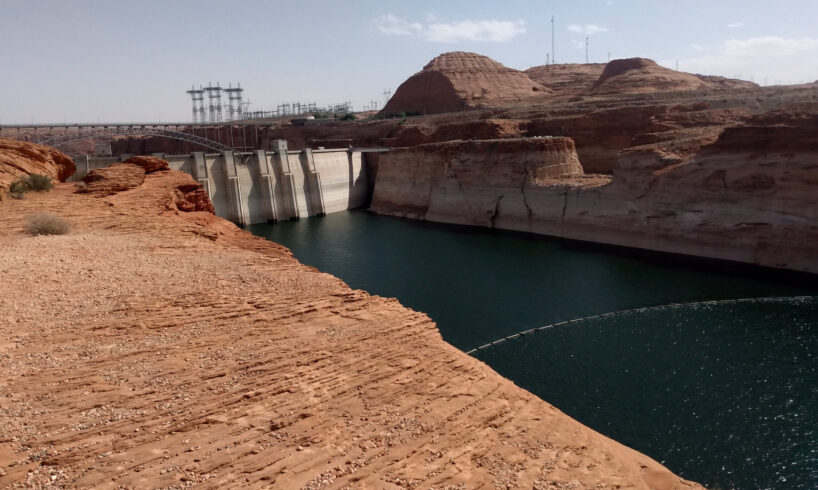
Scientists at Los Alamos National Laboratory modeled future drought indicators to gauge how climate change could impact the Colorado River Basin.
“We really think that drought is one of the greatest risks in terms of climate change to the stability of the Colorado River Basin,” said Katrina Bennett, a member of the Los Alamos team that published the results of that modeling in the journal Earth and Space Science.
Bennett said that drought is complex, but using a simplified machine learning, or artificial intelligence, process, allowed the team to assess the changing drought indicators. The team modeled indicators like soil moisture, runoff, evaporative demand, changes in temperature and precipitation.
Bennett said her team saw a large change in soil moisture as well as runoff and streamflow. She said changes in snowpack in the Upper Colorado River basin will mean that runoff from the snowmelt occurs earlier in the year. She said that is already well documented, but the modeling her team did found that even in scenarios where precipitation increases, the higher temperatures will lead to more of it evaporating rather than flowing downstream.
These changes could alter reservoir management and irrigation in the entire Colorado River Basin. This basin includes parts of seven states and is generally divided into the lower basin states of Nevada, Arizona and California and the upper basin states of Utah, Colorado, Wyoming and New Mexico. The Glen Canyon Dam is used as the dividing point between the two basins.
In New Mexico, the San Juan River is the tributary to the Colorado River that provides parts of the state, including Albuquerque, with water.
The study found that the Green River Basin, which includes parts of Colorado, Wyoming and Utah, will experience more arid conditions and that the mountain areas in Arizona will see a significant reduction in soil moisture.
Bennett said the team used a machine learning method called non-negative matrix factorization. She described it as being like a clustering tool that allowed the team to look at a vast array of climate modeling, which could be terabytes of information and different scenarios.
Bennett said the information available through the Los Alamos study could help better plan for the future with a clear understanding of how the Colorado River Basin is going to change.
This article was originally posted on Los Alamos team models drought, climate change on the Colorado River